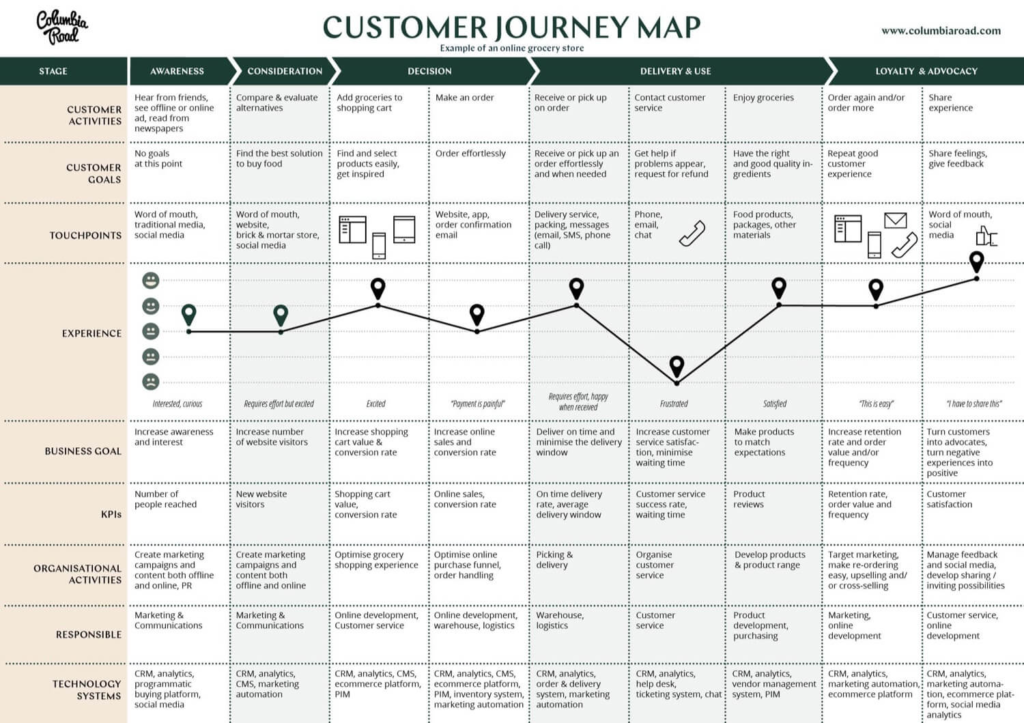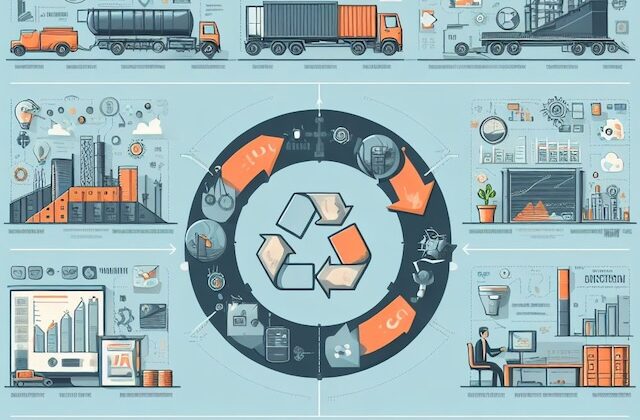
User Journey
“In product management, you’re not just building products; you’re building businesses.”
– Ben Yoskovitz
Welcome to Day 09 of the PM series – Product Management in 30 days!
In today’s hyper-competitive business landscape, crafting exceptional user experiences is paramount. It’s not just about having a great product; it’s about understanding your users, their needs, and how they interact with your product or service. One of the key tool that can help you achieve this understanding is User Journey Mapping. In this extensive post, we’ll delve into the world of User Journey Mapping, exploring its significance, the step-by-step process, and how it can revolutionize your product management strategy.
Learning Objectives:
Understanding the Significance of User Journey Mapping:
- Learn the importance of User Journey Mapping in today’s hyper-competitive business landscape.
- Recognize how User Journey Mapping contributes to crafting exceptional user experiences.
- Understand the role of User Journey Mapping in empathizing with users and addressing pain points.
Components of User Journey Maps:
- Identify the key components of a Customer Journey Map, including personas, stages, touchpoints, channels, and more.
- Understand the significance of incorporating experienced emotions, business goals, KPIs, and organizational activities in a User Journey Map.
The User Journey Mapping Process:
- Gain insights into the step-by-step process of creating a User Journey Map.
- Learn the importance of defining user personas, identifying touchpoints, and creating a visual representation of the user’s journey.
- Understand how data collection, analysis, and iteration contribute to the effectiveness of User Journey Mapping.
Introduction
User Journey Mapping is a visualization technique that helps product managers, designers, and marketers understand the entire user experience, from the initial contact to the final interaction. By creating a detailed map of a user’s journey, you can identify pain points, opportunities for improvement, and moments of delight.
🤷♀️ Why User Journey Mapping Matters?
Understanding the user journey is essential for several reasons:
➡️ Empathy: It helps you empathize with your users, seeing your product or service from their perspective.
➡️ Identification of Pain Points: It reveals pain points and frustrations in the user’s experience, allowing you to address them proactively.
➡️ Opportunity Discovery: It highlights opportunities for innovation and enhancement.
➡️ Alignment: It aligns teams around a common vision, ensuring everyone understands the user’s needs and objectives.
Components of User Journey Maps
A Customer Journey Map is a visual representation that outlines the various stages and touchpoints a customer goes through while interacting with a product or service. It helps businesses understand the customer’s experience, identify pain points, and optimize interactions.
The components of a Customer Journey Map typically include:
- Persona: A detailed description of the customer persona involved in the journey. This includes demographics, behaviors, motivations, and goals.
- Stages: The journey is divided into distinct stages representing key phases the customer goes through, from awareness to post-purchase experience.
- Customer Goals: The goals or objectives the customer wants to achieve at each stage. This aligns with their overall motivations and contributes to a positive experience.
- Touchpoints: Every interaction or point of contact between the customer and the product or service is identified. This includes both digital and physical touchpoints.
- Channels: The various channels or platforms through which the customer interacts with the brand, such as website, social media, email, or in-store.
- Experienced Emotions: The emotional state of the customer at different touchpoints. Understanding emotions helps in identifying moments of delight, frustration, or confusion.
- Business Goals: Business goals represent the overarching objectives and desired outcomes that an organization aims to achieve. These goals are often high-level and aligned with the overall strategic direction of the company. In the context of a user journey, business goals might include increasing revenue, expanding market share, enhancing customer loyalty, or launching new products/services.
- KPIs (Key Performance Indicators): KPIs are specific, measurable metrics used to evaluate the performance of a business in achieving its objectives. KPIs are quantifiable and provide insights into whether the organization is on track to meet its goals. In a user journey, KPIs could include conversion rates, customer satisfaction scores, user retention rates, or other metrics relevant to the business objectives.
- Organizational Activities: Organizational activities encompass the various tasks, processes, and actions that the company undertakes to fulfill its business goals. These activities may involve marketing initiatives, product development, customer support, sales efforts, and more. Understanding organizational activities helps in aligning them with the user journey to ensure a cohesive and effective approach.
- Responsible: The responsible party or parties are individuals or teams within the organization who are accountable for specific aspects of the user journey. Assigning responsibilities ensures that tasks are carried out efficiently, and there is clarity regarding who is in charge of each stage. Responsibilities might be divided among departments such as marketing, sales, customer support, or product development.
- Technology Systems: Technology systems encompass the software, tools, and platforms that support and enable organizational activities. These systems could include customer relationship management (CRM) software, analytics tools, and communication platforms.

The User Journey Mapping Process 🛣️
Let’s break down the User Journey Mapping process into actionable steps:
1️⃣ Define the User Persona – Define your target user persona. Who are they? What are their goals, challenges, and preferences?
2️⃣ Identify User Touchpoints – Make a list of all the touchpoints where users connect/interact with your product or service. These can include website visits, app downloads, customer support interactions, and more.
3️⃣ Create a User Flow Chart – Create a flow chart that outlines the user’s journey step by step. Begin with the initial interaction and follow their path through various touchpoints.
4️⃣ Gather Data and Insights – Collect data and insights about user behaviour at each touchpoint. This can come from user surveys, analytics tools, or direct user interviews.
5️⃣ Identify Emotions and Pain Points – Identify the user’s emotions, pain points, and moments of delight at each touchpoint. This requires empathy and a deep understanding of user psychology.
6️⃣ Visualize the User Journey Map – Create a visual representation of the user journey map, incorporating all the collected data and insights. This can be a timeline or a diagram, depending on your preference.
7️⃣ Analyze and Iterate – Analyze the completed User Journey Map to identify patterns and areas for improvement. Iterate on your product or service based on these insights.
Case Studies and Real-Life Examples
To illustrate the power of User Journey Mapping, let’s explore a few real-life case studies:
*️⃣ Amazon’s One-Click Ordering:
Amazon’s one-click ordering system was born from a deep understanding of user journey mapping. By reducing the steps required to make a purchase, they enhanced the user experience and increased conversion rates significantly.
*️⃣ Airbnb’s Host Onboarding:
Airbnb mapped the host onboarding process to identify pain points and streamline the experience. This resulted in more hosts joining the platform and providing better listings.
🏋️ Key Takeaways
User Journey Mapping is a dynamic process continually evolves as your product or service grows. Here are some key takeaways:
- Empathize with Users: Always put yourself in your users’ shoes and strive to understand their needs and emotions.
- Iterate and Improve: Use User Journey Mapping as a tool for continuous improvement. Your product or service should evolve based on user feedback and insights.
- Collaboration: Involve cross-functional teams in the User Journey Mapping process to ensure alignment and a holistic understanding.
🔔 Conclusion
In the realm of product management and user experience design, User Journey Mapping is an invaluable tool. It lets you see your product or service through your users’ eyes, leading to better decisions, enhanced user satisfaction, and, ultimately, business success. By embracing User Journey Mapping as a fundamental practice, you can craft exceptional user experiences that set you apart in today’s competitive landscape.
Quiz Time:
Question: Why is User Journey Mapping considered essential in product management?
- A. To increase product cost
- B. To empathize with users and understand their experiences
- C. To complicate decision-making processes
- D. To eliminate user interactions
Question: What are some key components typically included in a Customer Journey Map?
- A. Only demographics and touchpoints
- B. Stages, goals, and touchpoints
- C. Emotions and preferred brands
- D. Only organizational activities and business goals
Question: What does the User Journey Mapping process involve?
- A. Only creating a visual representation
- B. Identifying touchpoints and defining user personas
- C. Ignoring user emotions
- D. Excluding real-life data collection and analysis
Question: How does User Journey Mapping contribute to product improvement?
- A. By avoiding user feedback
- B. By staying static without any changes
- C. Through continuous iteration based on insights
- D. By neglecting cross-functional collaboration
Question: Which of the following is a key takeaway from User Journey Mapping?
- A. Disregard user emotions
- B. Avoid involving cross-functional teams
- C. Continuous improvement is unnecessary
- D. Always empathize with users and understand their needs
✍️ Write your answers in the comment section. e.g 1-a, 2-b, 3-c etc.
If you want to learn more about product management, you can also find other posts. The Full series is available here
One of the recommended books to learn about product management is The Innovators Dilemma by Clayton M.
💌 Do drop me a comment below if you found the content useful and/or want me to write on a specific topic. This will make my day! 🙂
Also, share the post if you think this might help someone. The sharing link is at the top of the page.
Join FreeMentor as a student if you are a newbie in product management and want to have one Free 1:1 mentorship session.
Disclaimer:
Please note that I don’t make any guarantees about the information supplied in this post. I share educational and informational resources that are intended to help you succeed in understanding product management. You nevertheless need to know that your ultimate success or failure will be the result of your own efforts, your particular situation, and innumerable other circumstances beyond my knowledge and control.
#UserJourneyMapping #UserExperience #ProductManagement #DesignThinking #UXDesign #LinkedInPost

